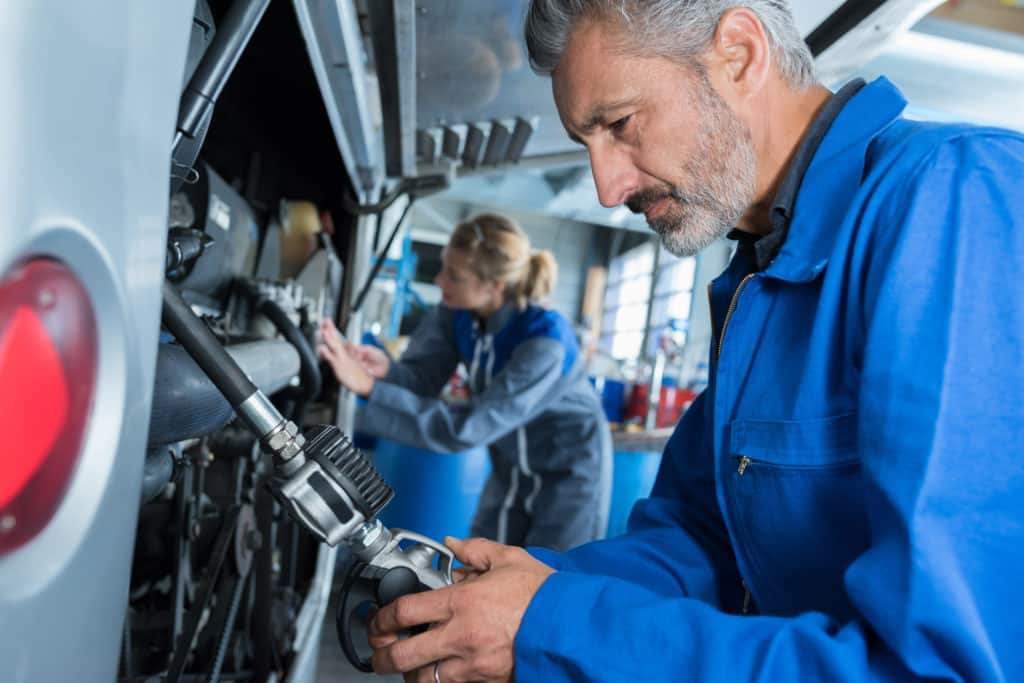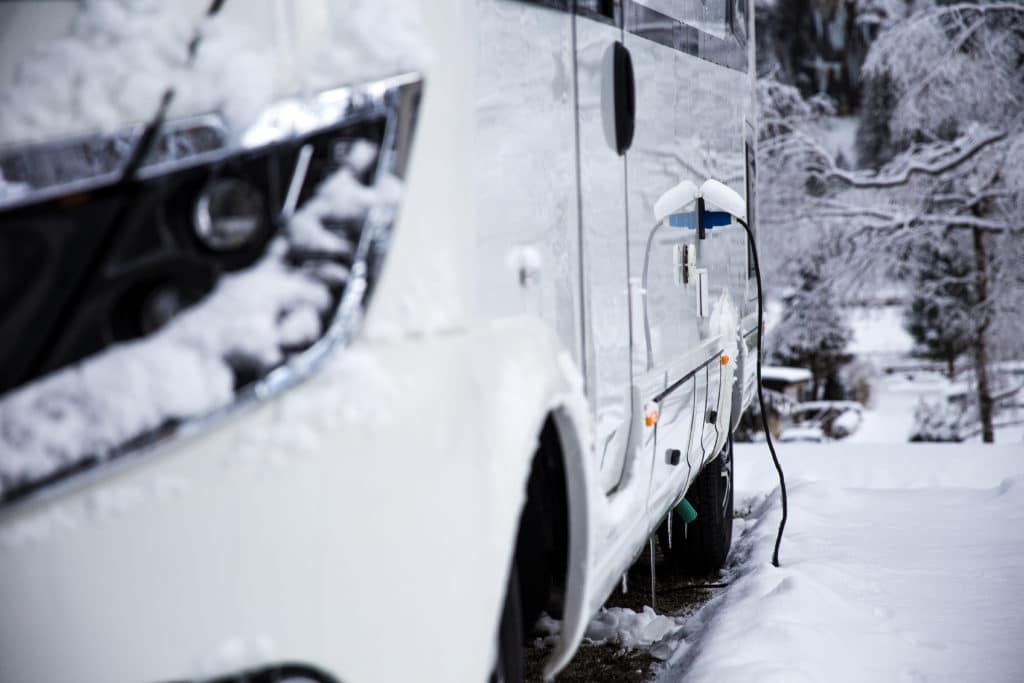As winter nears, it’s time to prepare RVs and campers for the winter season. We recommend getting this done before temperatures drop below 35 degrees Fahrenheit. Your local RV repair shop, Timbuktu RV, is here to walk you through the process.
Here, we talk about a few essential tasks to help avoid damage to your RV!
Draining Your Water Supply
Water left in your RV will likely freeze and expand, causing pipes to burst and potentially flood. While there are many necessary steps to winterize your RV, draining your water supply comes first.
- Drain the Water Heater Tank: Before you drain your hot water heater, make sure the switch is off to let the water cool. After the water cools, remove the plug and drain your hot water heater. We recommend replacing the plug afterward. When complete, continue the same procedure for the rest of your holding tanks.
- Empty Leftover Water from Appliances: Although the tanks are drained, water can remain inside appliances. It’s vital to turn on each faucet and flush your toilet until empty. To prevent mold and bacteria from growing, use a tank cleaning product or cleaning supplies to ensure your appliances are clean and dry. If moisture is difficult to reach within the pipes, use an air compressor.
Apply RV Antifreeze in Plumbing System
Applying antifreeze in your plumbing system ensures your pipes don’t burst or expand under pressure. Below are essential steps to take to prevent plumbing system damage due to dropping temperatures.
- Bypass Your Hot Water Heater: Your RV likely comes with a hot water bypass kit installed. If not, you can buy one at your local store. After you get your kit, you can disconnect the hot and cold lines after you turn off the water heater. Once done, you can connect your bypass kit, open it, and reconnect the water lines. Bypassing the water heater is important to do when adding antifreeze to the system.
- Fill Your Plumbing System With Antifreeze: You will have to position your RV water line in an antifreeze container to fill the plumbing system. Do this by disconnecting the RV water line and putting the end of it in the antifreeze container. Consider purchasing around four gallons of antifreeze.
- Turn on the Freshwater Pump: Once you turn on your freshwater pump, let the antifreeze flow throughout the pipes of the plumbing. It’s also necessary to turn all the faucets on and flush the toilet until you finally see the antifreeze.
- Empty the Water Heater: Finally, emptying your water heater ensures nothing occurs during the draining and bypass process. This will potentially save you time and money spent on antifreeze and services before winterizing your RV. Once you get to the end of this step, your RV is ready for winter.
Visit Your Local RV Repair Shop to Prepare for Winter
At Timbucktu RV, we want to ensure that you have the information to winterize your RVs and campers. When you’re ready to take out your RV come springtime, choose Timbucktu RV for your RV repair and service needs!


